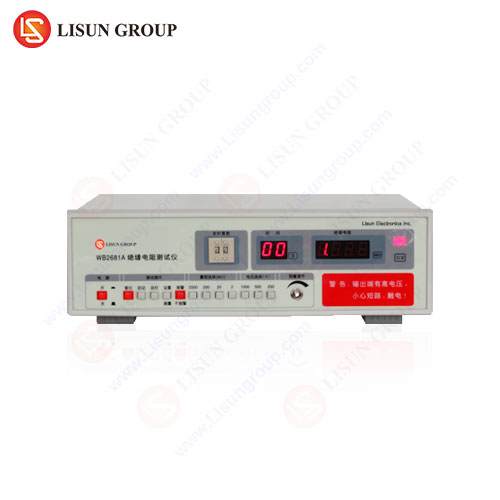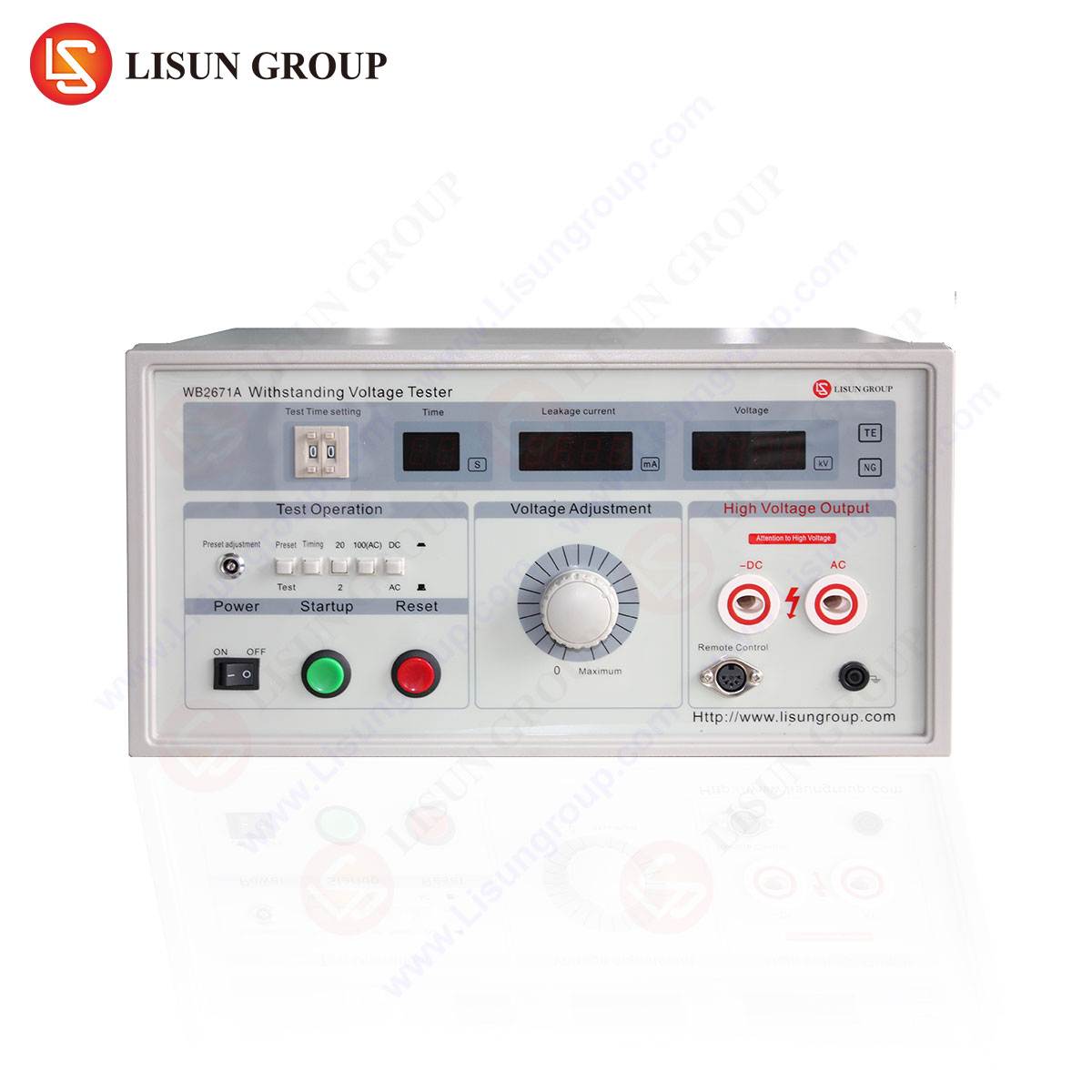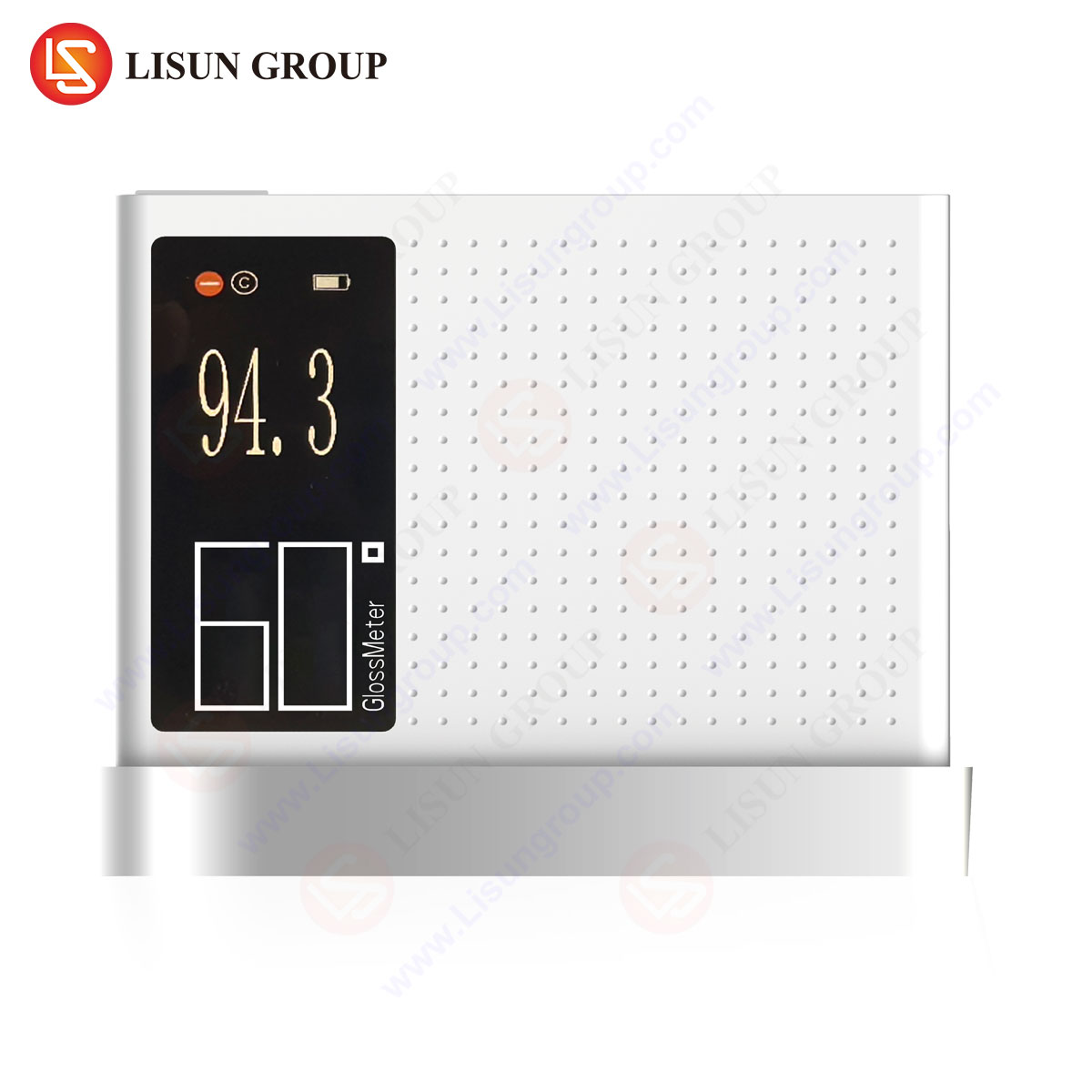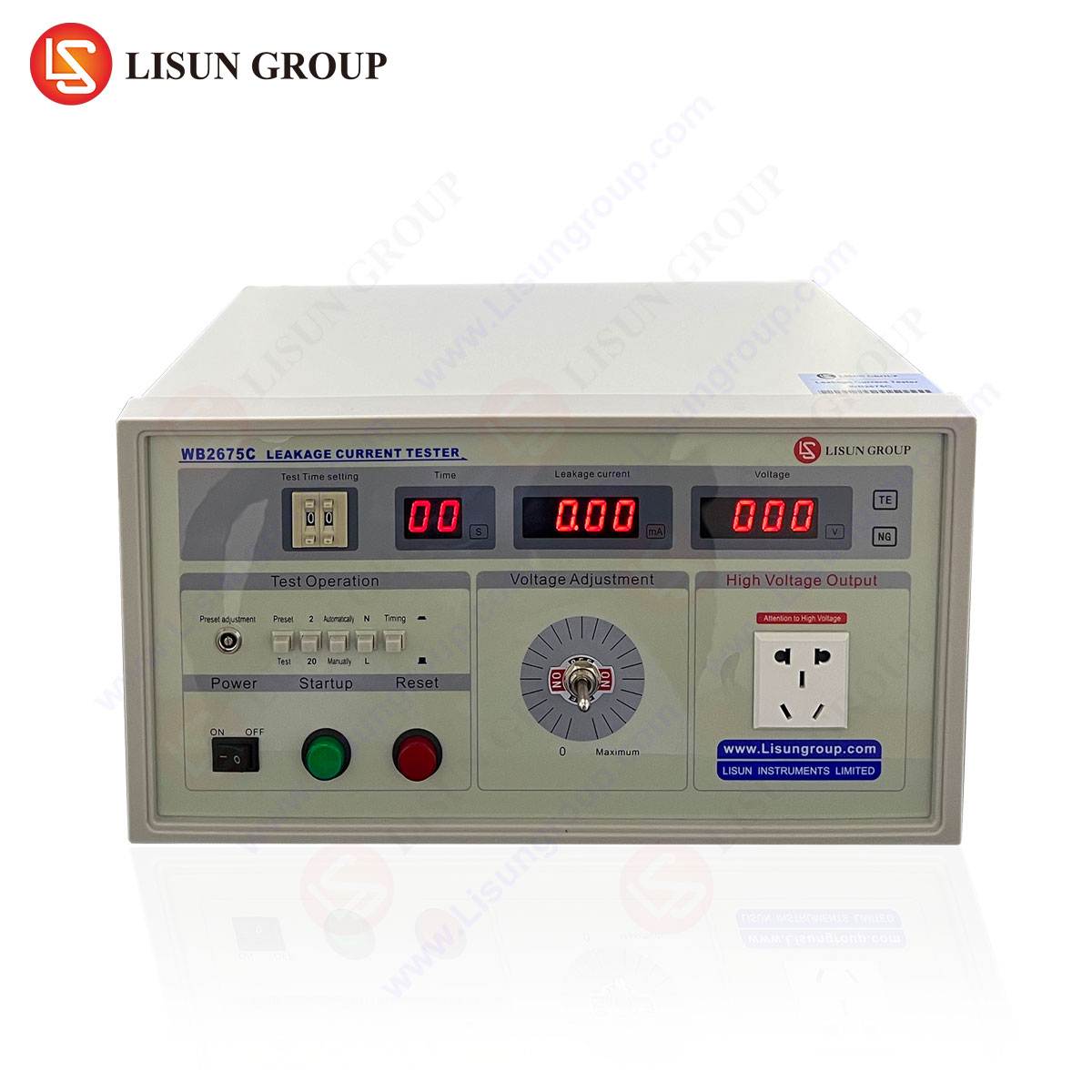Fundamentals of Electrical Leakage and Insulation Integrity
Leakage current represents the unintended flow of electrical current from a live conductor through or across an insulating material to a grounded or accessible part. This phenomenon is a critical safety parameter, as excessive leakage current can lead to several hazardous conditions, including electric shock to users, damage to equipment, insulation breakdown leading to short circuits, and potential fire ignition. The primary objective of leakage current testing is to verify that the insulation system of an electrical or electronic product is adequate to prevent this undesirable current flow under both normal operating and single-fault conditions. This form of testing is a non-destructive method that rigorously assesses the quality and integrity of dielectric materials, safety gaps, and creepage and clearance distances within a device.
The underlying principle involves the application of a test voltage, typically either the rated operating voltage of the equipment under test (EUT) or a higher voltage as stipulated by safety standards, across the insulation barrier. The resultant current that flows is then measured with high precision. This current is a composite signal consisting of several components: capacitive leakage due to the inherent capacitance between conductors, conduction leakage through the insulation material itself, and surface leakage along contaminated or moist paths on the insulator’s surface. A proficient leakage current tester must accurately isolate and measure this cumulative current to determine compliance with established safety limits.
International standards, such as IEC 60601-1 for medical equipment, IEC 60990 for measurement methods, IEC 60335-1 for household appliances, and UL 60950-1 for information technology equipment (now superseded but still referenced), provide the definitive frameworks for test methodologies, circuit networks (e.g., the measuring device or MD as defined in IEC 60990), and permissible leakage current thresholds. These standards ensure a consistent and globally recognized benchmark for product safety, making leakage current testing a mandatory prerequisite for market access in most jurisdictions.
Methodologies for Measuring Leakage Current
The specific methodology employed is dictated by the applicable safety standard for the product category. The three most prevalent measurement types are Touch Current, Protective Conductor Current, and Electric Strength (Hi-Pot) testing, which, while related, serve distinct purposes.
Touch Current, often synonymous with “enclosure leakage” or “patient leakage” in medical standards, measures the current that could flow through a human body touching an accessible part of the equipment. This is simulated using a standardized measurement network (the MD) that approximates the frequency-dependent impedance of the human body. The test is performed under normal conditions and with a series of single-fault conditions, such as interrupting the neutral supply or opening the protective earth conductor.
Protective Conductor Current measures the current flowing through the grounding conductor of a Class I appliance during normal operation. This is a direct measurement that ensures the grounding system is not overloaded by continuous leakage current, which could potentially lead to a voltage rise on accessible conductive parts if the ground connection becomes compromised.
Dielectric Strength Testing, or Hi-Pot testing, is a complementary but more aggressive test. It involves applying a significantly high voltage (e.g., 1000V AC + twice the operating voltage) across the insulation to verify it can withstand transient overvoltages without breaking down. While it checks for insulation integrity, it is a pass/fail test for breakdown and does not provide a quantitative measure of leakage current under operational voltages. Leakage current testing is often performed at operational voltages as a more sensitive indicator of impending insulation degradation.
The selection of AC or DC test voltage is another critical consideration. AC testing is the most common, as it evaluates the insulation under conditions that simulate real-world operation, including the effects of capacitance. DC testing is sometimes used for specific components like capacitors or for long cable runs where the capacitive charging current associated with an AC test would be prohibitively large and mask the actual leakage current.
Operational Workflow for Leakage Current Assessment
A systematic approach is paramount to obtaining accurate and repeatable leakage current measurements. The process begins with a thorough review of the relevant product safety standard to identify the exact test conditions, fault scenarios, and applicable limits. The test environment must be controlled, with stable line voltage and frequency, and the EUT should be conditioned to room temperature if the standard requires it.
The second step involves configuring the test equipment. For a comprehensive assessment, a dedicated leakage current tester like the LISUN WB2675D is connected between the EUT and the AC power source. The instrument itself will incorporate the standardized MD network, eliminating the need for external circuitry. The EUT is placed on an insulated surface to prevent accidental grounding, and all accessible conductive parts are connected to the measuring terminal of the tester. For protective conductor current, the current clamp or input terminals are connected in series with the earth ground line.
Subsequently, the test voltage is applied. The tester ramps up the voltage to the specified value, typically the rated voltage of the EUT (e.g., 120VAC or 230VAC). Measurements are taken under normal conditions. The tester then systematically introduces fault conditions, such as line/neutral reversal and opening the protective earth, while monitoring the leakage current. Each measurement must be recorded and compared against the maximum allowable leakage current specified in the standard, which can range from 0.1 mA for medical equipment applied parts to 3.5 mA for certain industrial machinery.
The LISUN WB2675D Leakage Current Tester in Practice
The LISUN WB2675D is an integrated instrument designed to automate and streamline the complex process of leakage current testing. It combines a programmable AC power source, a precision measurement system with built-in MD networks, and a sequence controller for applying fault conditions, all within a single chassis. This integration significantly reduces setup time and potential for operator error.
Its operational principle is based on generating a stable, low-distortion sinusoidal AC output voltage. This voltage is applied to the EUT. The current flowing from the live parts to the accessible parts (or to ground) is then sensed and processed through an internal analog network that weights the current components according to the frequency-response curve defined in IEC 60990. The resulting value is a true representation of the perceived shock hazard. The WB2675D’s microprocessor then digitizes this signal, applies any necessary calibration factors, and displays the result on a digital readout.
Key specifications of the LISUN WB2675D include:
- Test Voltage: Programmable output from 0 to 300V AC (or wider ranges in other models), adjustable in 1V increments.
- Output Frequency: 50Hz / 60Hz ± 0.1Hz, ensuring compliance with regional power grids.
- Plage de mesure : Typically covers from 0.001mA to 20mA, providing high resolution for low-leakage devices and sufficient range for larger equipment.
- Précision : High precision, often better than ±(3% of reading + 5 digits), which is critical for verifying compliance with stringent limits.
- MD Networks: Pre-configured networks for measuring Touch Current (IEC 60990), Patient Leakage (IEC 60601-1), and other standards.
- Automated Test Sequences: Capable of automatically performing tests under normal, reverse-line, and open-ground fault conditions, logging all results.
This instrument finds critical application across a vast spectrum of industries. In dispositif médical manufacturing, it is used to test patient monitors and surgical equipment to the ultra-strict leakage limits of IEC 60601-1. Automotive electronics suppliers use it to validate the insulation integrity of onboard chargers and power converters for electric vehicles. Manufacturers of systèmes de contrôle industriel et équipements de télécommunications rely on it to ensure the safety of cabinets and racks that operate continuously. Furthermore, it is indispensable for testing les appareils ménagers, lighting fixtures (especially LED drivers), office equipment, et électronique grand public to their respective IEC 60335, IEC 60598, and IEC 62368 standards.
The competitive advantage of the WB2675D lies in its integration, accuracy, and compliance. By bundling the power source and measurement system, it offers a turnkey solution that is more reliable and easier to validate than piecing together separate components. Its programmability and automated sequences enhance reproducibility in a production line environment, reducing test time and operator dependency.
Industry-Specific Applications and Compliance Protocols
The application of leakage current testing varies significantly depending on the product’s end-use environment and the associated risks.
Medical Devices (IEC 60601-1): This represents the most rigorous application. Testing is categorized into Earth Leakage, Enclosure Leakage, and Patient Leakage currents. Limits for Patient Leakage, where equipment connects directly to a patient, are exceptionally low (e.g., 0.01 mA under normal conditions, 0.05 mA under single-fault conditions for CF-type applied parts). The WB2675D’s high-resolution measurement capability is essential here. Tests must be conducted with line voltage reversal and with the protective earth opened.
Household Appliances (IEC 60335-1): For Class I appliances (with a ground pin), both Touch Current and Protective Conductor Current are measured. The limit for Touch Current is typically 0.25 mA for handheld appliances and 0.75 mA for stationary appliances. Protective Conductor Current should not exceed 5% of the appliance’s rated current input. Testing is performed on products like washing machines, refrigerators, and electric kettles.
Information Technology & Telecom Equipment (IEC 62368-1): The new hazard-based safety standard IEC 62368-1 has replaced older standards for IT and AV equipment. It classifies energy sources and prescribes safeguards. Leakage current testing remains a core verification method for ensuring accessible parts are within safe limits. Equipment like servers, routers, and power supplies are tested under all input supply conditions.
Automotive Electronics (ISO 6469-3): For electric vehicles, high-voltage components must undergo rigorous isolation testing. While dielectric strength testing is primary, functional leakage current monitoring under operational voltage is crucial for systems like the battery management system (BMS) and DC-DC converters to ensure safety during vehicle operation.
Aerospace and Aviation (DO-160/AS9100): Components for airborne use must withstand harsh environmental conditions. Leakage current testing is performed not only at room temperature but also over temperature and humidity cycles to ensure insulation integrity does not degrade under anticipated operating environments.
Data Interpretation and Analysis of Test Results
A successful test outcome is one where all measured leakage current values fall below the thresholds defined by the governing standard. However, the raw data can also provide valuable diagnostic information. A reading that is stable but consistently near the upper limit may indicate a design operating at its margin, potentially risking non-compliance due to component tolerances or aging. A reading that is abnormally high, even if below the limit, warrants investigation into the cause, such as poor board layout, insufficient creepage distances, or the use of low-quality insulating materials.
Trend analysis is particularly useful in a production environment. A gradual upward creep in leakage current measurements for a given product line can be an early indicator of a process-related issue, such as contamination on PCBA, a change in a component supplier, or inadequate curing of conformal coating. Capturing and logging data with an instrument like the WB2675D allows for statistical process control (SPC), enabling proactive maintenance and quality assurance before a non-conforming product is manufactured.
Should a test failure occur, the analysis must be methodical. The first step is to verify the test setup and instrument calibration. Assuming these are correct, the failure points to an insufficiency in the product’s insulation system. Common root causes include insufficient spacing between primary and secondary circuits on a PCB, a compromised isolation barrier in a transformer or optocoupler, contamination (flux, dust, moisture) creating a surface leakage path, or a failing filtering capacitor across the isolation boundary providing a low-impedance AC path.
FAQ: Leakage Current Testing and the LISUN WB2675D
Q1: What is the difference between leakage current testing and a hipot (dielectric strength) test?
A: Leakage current testing measures the actual current flowing through insulation under normal operating voltages (e.g., 120VAC/230VAC), providing a quantitative safety value. A hipot test applies a much higher stress voltage (e.g., 1000VAC/1500VAC) to verify the insulation’s ability to withstand transient overvoltages without breaking down; it is typically a pass/fail test for dielectric breakdown, not a measurement of operational leakage.
Q2: Can the LISUN WB2675D tester simulate open-ground and line-reversal fault conditions automatically?
A: Yes, a key feature of advanced testers like the WB2675D is their ability to program and execute automated test sequences. This includes automatically switching the power polarity (line-reversal) and internally opening the connection to the protective earth conductor to simulate a broken ground wire, all while measuring and recording the leakage current for each state.
Q3: Why are there different leakage current limits for medical devices compared to household appliances?
A: The limits are based on the perceived risk. Medical devices often have applied parts that make direct electrical contact with a patient who may be unconscious, immobilized, or otherwise vulnerable, and whose natural skin resistance may be bypassed. This drastically increases the risk of electric shock from even minute currents, necessitating far more stringent limits (e.g., 0.01mA vs. 0.75mA).
Q4: How often should a leakage current tester be calibrated to ensure accuracy?
A: Calibration intervals are determined by the user’s quality system, often based on manufacturer recommendations, industry practice (such as ISO 17025), and the criticality of the measurements. An annual calibration cycle by an accredited laboratory is a common industry standard to ensure traceability and maintain measurement integrity.
Q5: Our product has a switched-mode power supply (SMPS). Will this affect the leakage current measurement?
A: Yes, significantly. SMPS designs use EMI filtering capacitors (Y-capacitors) connected between the primary AC lines and the secondary low-voltage ground. These capacitors provide a designed, intentional path for leakage current at the AC frequency. The value of these capacitors is carefully chosen to keep the resultant leakage current within the limits of the safety standard. Your measurement will include this current, which is normal and expected.






